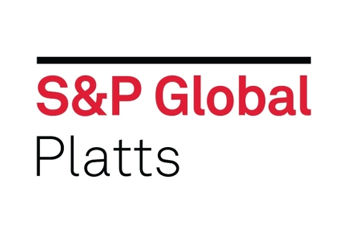Brent/WTI Spread Narrows on Large Cushing Stock Draw
 The Brent/WTI spread narrowed considerably during June, as inventories at Cushing fell to levels last seen in December 2014. Despite news that the Syncrude facility in Alberta would be offline until at least the end of July, Canadian prices remained fairly flat during the weeks following the announcement. The Midland Sweet differential strengthened during June, but Permian production growth is expected to further pressure takeaway capacity in the months to come.
The Brent/WTI spread narrowed considerably during June, as inventories at Cushing fell to levels last seen in December 2014. Despite news that the Syncrude facility in Alberta would be offline until at least the end of July, Canadian prices remained fairly flat during the weeks following the announcement. The Midland Sweet differential strengthened during June, but Permian production growth is expected to further pressure takeaway capacity in the months to come.
The Elusive Next Wave of LNG Remains Just That
As the 30th Global Gas Conference in Washington, DC drew to a close last week, the stark contrast between the abundant platitudes on the benefits of natural gas from representatives from all ends of the earth, including those countries that appear to have none such resources, and the dearth of any final investment decisions to propel the market forward is striking. While many announcements have been made in the past several days that essentially highlight the necessary steps in any project development, such as FEED contracts, FERC environmental approvals, upstream agreements, none have the critical F.I.D. Still, no one appears to be panicking, except perhaps the US Gulf project developers some of whom face an existential threat as the barriers to entry are lowered and the field of proposed projects becomes more crowded.
Coal Prices Continue Pushing Higher, Led By Gains in the Atlantic Basin
Coal prices in the Atlantic and Pacific Basins ticked higher last week across the forward curve, led by gains in CIF ARA. Higher oil and NBP prices, plus tight balances in the Pacific Basin and reports of some tightness in U.S. supply were driving factors behind the rise in prices.
Latest U.S. VMT Data Corroborate Gasoline Performance
The U.S. Federal High Administration’s VMT data for April show a return of year-on-year declines, while gasoline demand shows a similar decline. Short-term momentum in VMT has been running largely in negative territory since Sept ’17. A secular decline has been occurring in VMT growth since early 2016, when year-on-year growth peaked near 2.7%. It now stands near 0.2%. The 12-month running average of VMT growth has been in decline since end-2016 and has now fallen to 0.9%. Our expectation is for gasoline demand to remain below year-ago levels until 4Q, when modest growth will return. Higher pump prices vs. year-ago, and vs. earlier in 2018, remain headwinds to demand performance and have offset improved performance in income and employment. Demand averaged 9.32 MMB/D in 2016 and 2017, with a similar level expected in 2018 and 2019.
What’s Next?
Perceived good news in corn last week as embattled EPA Administrator Pruitt finally succumbed to the pressure and resigned from his position one day after having his picture taken on the South Lawn of the White House at a 4th of July celebration. In his resignation letter to Trump, Pruitt cited continued scrutiny but offered no apologies, instead focusing on how “blessed” he had been to serve the current resident of 1600 Pennsylvania Avenue. Apparently written inside that $43,000 sound-proof booth now headed for E-Bay, Pruitt seemed oblivious to the firestorm that he had created, most noticeably making no comment about wishing the agency, and its constituents, well upon his departure. While not World Cup-caliber, celebrations were reported both inside and outside the Beltway after the news. Outside of South American soybean producing countries, no celebrations took place as this Administration’s threatened tariffs against China took effect, as promised. The Chinese government also remained true to its word, imposing tariffs on soybeans, corn, and forms of U.S.-produced protein. With the implementation of the tariffs now seemingly behind us, although Trump has said that should the Chinese retaliate he will be “forced” to impose even more tariffs in the very near future, the most pressing matter is what happens next.
U.S. Commercial Stock Deficit Declines Sharply
Overall commercial stocks built last week by 3.3 million barrels, with both crude and products gaining. Crude added 1.2 million barrels, although Cushing storage continued to decline, dropping by 2.1 million barrels for the latest week. For this week crude stocks are expected to see a sharp 6.3 million barrel drop, as crude runs remain historically high with exports also continuing firm. Cushing storage is expected to fall by a further one million barrels for this week’s EIA report. Gasoline demand saw the expected holiday boost helping bring storage down by 1.5 million barrels. Demand should continue firm but high runs and output lead to about a one million barrel build for this week. Distillate storage was essentially flat on the week, although stocks remain sharply below year ago levels. This week is expected to see a quite large inventory increase.
U.S. jobs data hit all the right notes, while trade tensions intensify
The June U.S. employment report hit all the right notes. Gains in payroll were better than expected, pointing to a solid pace of economic expansion. The wage picture remained benign, as growth in worker compensation remained stable on a year-on-year basis. In addition, a large number of people joined the labor force last month, relieving worries about the U.S. economy running out of workers to hire. While trade tensions grew, business confidence data from key economies remained constructive.
 Light-end NGL Prices Advance
Light-end NGL Prices Advance
Front-month non-LST propane gained 2.3%, ending the week at 96.5 cents/gal. Front-month non-LST ethane gained 14.2%, ending the week at 38.25 cents/gal. US propane/propylene stocks increased 2.86 million barrels to 61.2 million barrels during the week ended June 29, according to EIA data. The stock build brings total inventories above year-ago levels for the first time in 2018, and within 10% of the five-year average. The EIA reported exports of 769,000 b/d, compared with Platts Analytics’ estimate of 875,000 b/d based on ship tracking data. Steam cracker margins continue to reach new lows amid low ethylene prices and high feedstock prices. S&P Global Platts assessed US Gulf Coast ethane cracker margins at just under 3 cents/lb of ethylene on July 2, the lowest level since Platts began assessing them in January 2011.
Nord Stream maintenance–Will the spreads widen?
With the end of IUK maintenance and a UK balance not as loose as might have been expected going into July, the NBP-TTF DA spread halved to €-0.63/MWh between 29th June and 2nd July and is trading close to parity (as of 5th Jul). In the meantime, the CEGH-TTF DA spread widened to €0.7/MWh from 21st June to date, which is an equivalent level to last year. With Nord Stream maintenance (from 17th July to 31st July) that will tighten the European hub balance, we expect the TTF DA to rise more against the NBP and CEGH equivalent, resulting in the widening of the NBP-TTF DA and a narrowing of the CEGH-TTF DA through the period.
Continuous Revisions in French Nuclear Availability Bullish for Prices: October the Most Impacted
French nuclear output has averaged 38.2 GW month-to-date, a significant improvement from the multi-year low of 35 GW observed last year in the first week of July. However, the current level turns out to be 4 GW below the long-term average for July. While the modulation of the nuclear fleet, driven by lower demand, might have played a role in these results, the continuous revision of the fleet availability has potentially a much larger impact. EDF maintenance schedule published through its REMIT platform continues to be pretty optimistic in regard to the plants under review, and (downward) revisions are going to play an important role in the actual availability for the remainder of 2H.
Japan Noted Improvement in Balances Beginning, but Margins Weak
Finished product stocks drew a strong 2 MMBbls, with crude stocks lower by 0.9 MMBbls. The product stock improvement occurred despite higher runs and flat demand. Refining margins are still weak and implied marketing margins still above their statistical highs. Demand performance going forward will be critical as runs will continue to rise in coming weeks.
Continuing Cross Currents in Credit
Some interesting cross currents continue amid a ramping up of the tariff tensions. For the week, the S&P 500 gained1.5% and VIX volatility was notably lower and down to 13. However, oil (WTI) was weaker and oil volatility was higher. Overall commodities were lower by -1.4%, but energy lost -2.1%, and industrial metals dropped -4.5%, while appearing to have broken their uptrend support line. Copper appears to be rolling over, while palladium, platinum, and aluminum have been lower. The U.S. dollar was weaker by 0.6%. The St. Louis financial stress indicator again jumped notably higher on the week, but overall stress levels remain low.
Aramco Pricing for August: No Pricing Surprises
Saudi Arabia released their pricing for August liftings last week. Saudi pricing adjustments were totally in line with the market drivers in both Asia and Europe. From May production levels of 10.06 MMB/D, Platts Analytics is assuming 640 MB/D higher output from Saudi, with about half of that increase already being placed in June. There is no evidence of “bargain pricing” to push incremental volume. Any desired barrels nominated and then allocated, will be in keeping with pricing signals seen in the market. Pricing on Arab light in Asia was cut $0.20/Bbl, which was in line with reduced backwardation in Dubai structure. Pricing on Arab light in Northwest Europe was cut $0.45/Bbl, totally reflective of the wider discount seen on Urals vs. Dated Brent. U.S. pricing was cut $0.10/Bbl on all but the lightest grade. Again, there were no surprises and no bargains being signaled to push volume.
Global Equities Largely Neutral
Global equities were little changed, and while the Americas and Europe moved higher, declines in Asia were largely offsetting. In the U.S., the S&P 500 gained 1.5%, with retail, utilities, and technology all gaining 2.3-2.6%. Energy was lower by -0.4%. Internationally, Latin America was strongly higher by 4%, but China, Japan, and emerging Asia were all particularly weak.
Lopez Obrador’s Presidential Election Win: Implications for Mexico’s Oil Production
Leftist populist Andres Manuel Lopez Obrador (AMLO) won Mexico’s July 1st presidential election by a significant margin. Campaign comments on his plans for oil reforms have been mixed, with his nominee for chief of staff supporting more oil tenders, while potential picks for energy and finance ministers have advocated halting the process. We continue to believe oil tenders in Mexico will slow, and increased local content requirements also look possible. But his coalition is unlikely to secure the two-thirds Congressional majority required to reverse constitutional reforms, and existing contracts do not appear to be at risk. The impact on our production forecast through 2025 will be minimal. NAFTA talks could face greater risks, as delays in the renegotiation process have pushed back the signing of a new deal until at least 2019. During the campaign, AMLO voiced support for NAFTA, but his nationalist views create the potential for a rhetorical standoff with U.S. President Trump.
The information above is part of S&P Global Platts Analytics weekly Energy Market Recap – which alerts readers to our current analysis of energy markets around the world as well as the key economic and political factors driving those markets. To read S&P Global Platts Market Recap first, subscribe here.
Click here for additional information on S&P Global Platts Analytics global energy commodity market research services.


